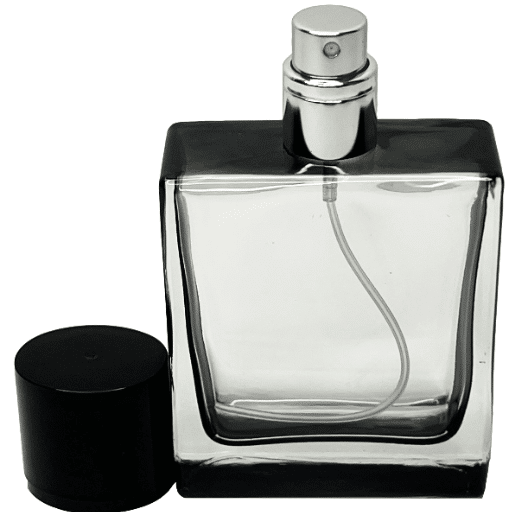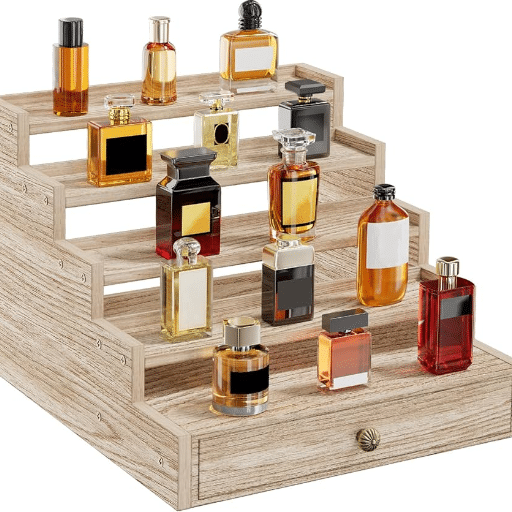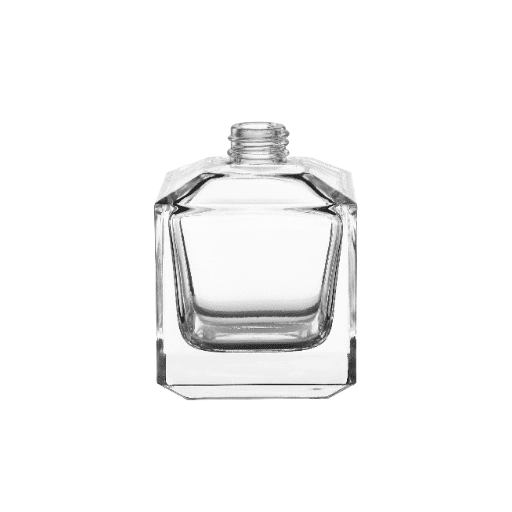Like everything else in life, putting on perfume has rituals everyone adheres to—have you ever thought about which way to apply perfume and get the most out of it? Would you rather spray it on your skin or your clothing draped over your body? This choice might seem insignificant but can considerably affect fragrance execution, longevity, and muscle metabolism interactions. This article details these principles and the differences between skin and clothes application methods. We discuss their pros, cons, expert suggestions, and how to utilize favorite fragrances optimally. From enthusiasts to those curating step-by-step routines, this guide will unfurl the multifaceted nature of perfume application.
Should I Spray Perfume on my Skin or Clothes?

Perfumes function best when sprayed on the skin, as fragrance binds with body temperature and oils, enhancing richness and depth. However, putting perfume on clothing works well, too, when one wants to achieve a milder scent or if one’s skin is sensitive to some perfumes. Be careful when spraying on clothing, as some perfumes can damage delicate materials. Consider your preferences, the event, and the fragrance type for optimal effect.
How Perfume Interacts with Skin Chemistry
Fragrant oils interact with the skin, creating new fragrances and altering their scent and longevity due to a person’s unique skin chemistry, including the skin’s pH level and moisturization. Each individual reacts differently depending on the molecular structure of the perfume. For example, oily-skinned individuals are likely to experience longer wear-time of fragrances as oil can retain scent molecules, while dry-skinned people encounter faster evaporation. Also, body temperature, along with a diet, can mildly change the smell and progression of the perfume over time.
Different perfumes can smell slightly different on one person because fragrant compounds, such as esters and aldehydes, interact differently based on skin moisture levels and acidity. Personalized fragrance selection tends to yield more exquisite results because it is tailored to the individual’s skin. Understanding these ensures that a more informed decision is made when choosing and applying a fragrance compatible with skin chemistry.
Why Perfume May Last Longer on Clothes
Due to the differences between how fabric and skin interact with fragrance molecules, perfume usually lasts longer on clothes. Natural fibers such as cotton and wool can absorb volatile compounds in perfumes and release them slowly. Skin, in contrast, produces oils and undergoes perspiration, which breaks down these molecules—shortening the duration of the scent. Other studies have noted that temperature and humidity can affect how long perfumes last on clothing, with cooler and drier conditions being more favorable. Moreover, certain fabrics protect perfumes from sunlight, preserving the scent for much longer. One should also be aware that using fragrance on clothes may alter the profile since some molecules interact differently with fabric than with skin.
Personal Preference: Finding What Works for You
Finding the most enjoyable and beneficial way to wear fragrances is an individual and even personal experience since it may differ significantly from person to person. The best way for some individuals is to apply the perfume directly to their skin because the warmth and natural oils make the scent come alive and transform into something divine over time. Other individuals like to spray their fragrance on their clothes to ensure the smell stays long and does not require direct skin contact. Research indicates that wearing fragrance on the so-called pulse points, such as wrists and neck, creates a surrounding scent as heat from the body activates the fragrance. On the other hand, applying fragrance to fabrics is more likely to improve diffusion duration, particularly on wool and cotton. In the end, trial and observation are essential to determine which methods fit a given person’s lifestyle, skin type, and daily habits.
What Are the Benefits of Applying Perfume Directly to Your Skin?
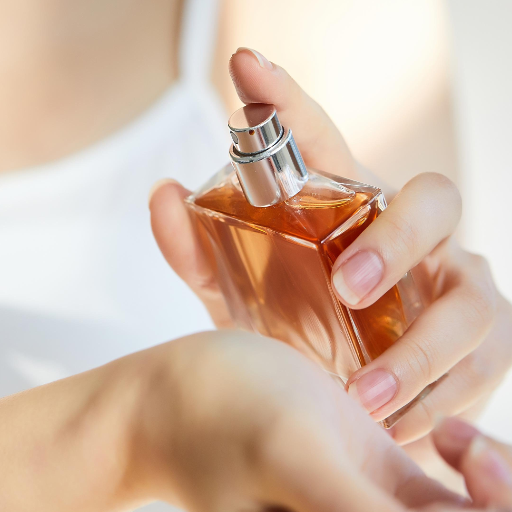
When you apply perfume directly onto your skin, the scent reacts with your body chemistry, creating a unique fragrance. Applying perfume on the skin helps release fragrance notes more effectively throughout the day, as the warmth of your skin enhances the scent. Moreover, applying perfume on the skin ensures fragrance will be diffused subtly and naturally, making it bond seamlessly with your “skin presence.”
How Body Chemistry Enhances Fragrance Notes
Your body chemistry helps determine heavily how a perfume develops and smells on the skin. The skin’s pH, oil content, and hormone levels can disrupt the interaction between different fragrance molecules. For example, people with oilier skin tend to experience longer-lasting scents, while drier skin feels more fleeting. Research has shown that the heat from the body accelerates the evaporation of lighter top notes, revealing deeper heart and base notes over time. Every person’s unique body chemistry provides a canvas for a perfume to bloom, which crafts a personal take on a fragrance.
Best Pulse Points for Perfume Application
Pulse points on the body can interact with heat and amplify the longevity and projection of perfume. An example of these areas is pulse points where blood vessels are close to the skin, including wrists and elbows. Remember to sprinkle perfume instead of spraying as it reduces friction, ensuring the scent lasts longer. Key pulse points include:
- Wrists—This is also a common area for application. Dab the perfume gently on each wrist, but do not rub to retain the top notes’ integrity.
- Neck and Collarbone—The side of the neck can also be focused on, as the region around the arteries can make a very warm pulse point.
- Behind the Ears—This discreet point radiates fragrance. The scent can be too intimate around other people, so be careful.
- Inner Elbows – A common area to release the fragrance with warmth and the motion of skin around it, alongside natural movement.
- Behind the Knees—This pulse point works exceptionally well in warm weather when worn in skirts or dresses, as it rises with body heat.
- Ankles and Calves – Move elegantly with action outdoors and send forth delicate fragrances for those near.
To maximize the impact, these areas should be moisturized beforehand as hydrated skin retains fragrance better. Also, lighter application during summer and more concentrated dabs during colder months enhance ambient conditions for a balanced aroma profile.
Why Perfume Projects Better from Warm Skin
Warm skin amplifies the energy provided by the body, increasing evaporation and diffusion of the perfume molecules. The fragrance will interact with body heat to intensify its projection, allowing the scent to radiate more intensely. States of matter have shown that higher temperatures will stimulate the movement of molecules to be more aggressive, thus increasing the likelihood of them dispersing into the air. This is most pronounced in regions with a rich blood supply or pulse points. It is widely known that the longevity and strength of fragrances improve when applied to warm and moisturized skin, compared to dry, cooler surfaces. This is why many experts suggest applying perfumes after showering or focusing on applying warm surfaces for maximal projection and longevity of scent.
What Happens When You Spray Perfume on Clothes?
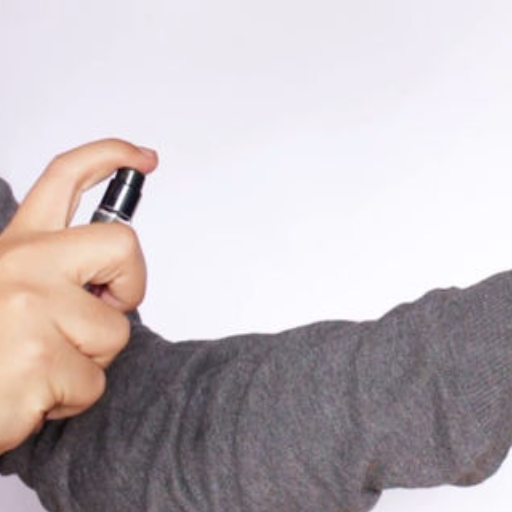
Perfume placed on clothes will smell different because it lacks the warmth and chemistry of one’s skin. Instead, the fragrance rests on fabric and surface, which may have less or other projections. Furthermore, some perfumes can stain light or delicate fabrics due to the oil or dye content. If one decides to use this method, it is better to use it on an unobtrusive garment section first.
How Fabric Affects Scent Longevity
Different types of fabrics affect how long a scent lasts on the clothing. Natural fibers – such as wool, cotton, and cashmere – are more effective in holding lustrous perfumes and fragrances because they are porous, allowing for deeper substance penetration. In contrast, synthetic blends such as polyester and nylon are less porous, making it almost impossible for such substances to permeate the fabric. Moreover, the weave and density of the fabric also matter; tighter and thicker weaves usually contain more fragrant molecules and can prolong the presence of these molecules on the material. Research suggests that other external factors, such as humidity and temperature, also impact how multilayered substances react on different clothes. The best choice of fabric and careful application can ensure that the scent survives all day on the wearer.
Avoiding Stains When Spraying Perfume on Clothes
Avoid stains while applying perfume to clothing and consider its composition and fragrance. However, oils or darker perfumes are more likely to cause stains on light fabrics. To avoid concentrated spots, spraying perfume from a distance of at least 6 inches is recommended. For delicate fabrics, broad application may not be appropriate, therefore testing the perfume on a small, hidden area is advisable. Also, it is better to use alcohol-based fragrances because they cause less staining than oil-based fragrances. Washing fabrics with protective spray also acts as a barrier against staining. Mindful selection and proper technique help reduce staining while enjoying your favorite scent.
Which Fragrances Work Best on Fabric
Selecting fragrances on fabric requires caution because the mix should not be too pleasant to stain or damage the fabric. Scents with unsophisticated bases, like floral and citrus, tend to be lighter and use fewer oils and colorants, which are the main culprits for fabric stains. Buying fragrances labeled as “fabric-friendly” is preferred as they are designed to minimize residue and ensure compatibility with different materials. In addition, it is prudent to use garments embroidered with synthetic scents because they are less enduring than natural scents. Also, water perfumes are more advisable due to their low alcohol volume for soft fabrics. Lowering the problems makes using subtle, lingering scents on cloth easier.
What’s the Best Technique for Perfume Application?
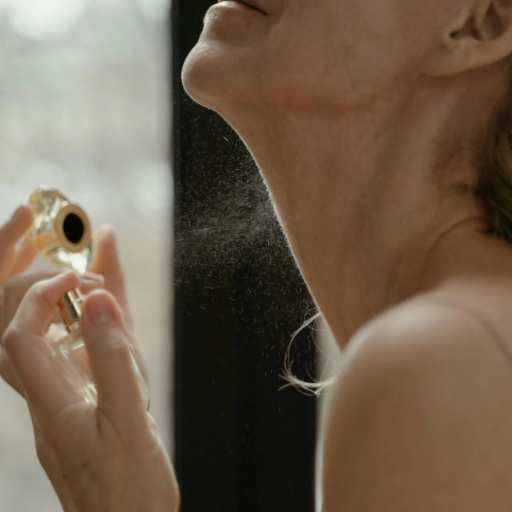
Applying perfume to pulse points is the best practice since these areas get warm and help diffuse the scent throughout the day. Ensure you apply perfume on wrists, behind the ears, the base of the neck, and inner elbows. A light application is best—one to two sprays— and beware of rubbing the perfume, as this can alter the fragrance. Try misting the perfume into the air and walking into it for lighter scents. Always apply perfume on clean, moisturized skin to maximize absorption and enduring results.
Proper Spritz Distance for Optimal Coverage
Spritz distance is crucial to evenly distributing perfume while enhancing the natural scent. Experts recommend holding the bottle 6 to 8 inches away from your skin when applying, as this allows for a fine mist that covers the desired area and does not oversaturate. When applying to fabrics or hair, a further distance of 8-12 inches is suggested to avoid overpowering the area. Studies note that spraying too closely creates uneven patches, which prevent the fragrance from blending with your skin, thus reducing its effectiveness and longevity.
How to Make Your Perfume Last All Day
Layer Your Scents
A sure way to make sure your perfume lasts for the entire day is to start with layering your scents. While taking a bath, start with a light-scented body wash or shower gel. Then, follow it up with a fragranced body lotion or oil that goes hand in hand with your body wash. Dry skin tends to absorb scents like perfume, so having a moisture-rich surface helps it cling to the fragrance, which enhances amplification. Not only does layering improve moisture-rich fragrance cling, but it also helps amplify the lasting duration of the scent.
Focus on Pulse Points
Apply your perfume on pulse points, areas where the skin is warmer. For example, wrists, neck, behind the ears, and inside of elbows are all warmer areas. These areas help release fragrances effectively throughout the day, and more warmth helps. For an even longer result, spritz some on the back of the knees and ankles, as they’re cooler but will have the scent rise with movement and body heat.
Apply Scent Primer
Unscented moisturizer or even petroleum jelly can be a base layer for holding fragrance. Apply a small amount to your pulse points before putting on the perfume. This step allows your skin to retain the adornment without absorbing it too fast, thus ensuring a lingering scent.
Consider Where You Store It Even More
Perfume should be kept in a dark place with steady temperatures that aren’t too hot or cold. Exposing perfume to extreme heat and bright lights can destroy its molecules. Using television storage helps maintain the strength of the fragrance and thus increases the lifespan of the perfume bottle.
Select The Correct Type
Different fragrances contain variable concentration levels, split between Eau de Toilette, Eau de Parfum, and Parfum. Pieces labeled ‘Eau de Toilette’ will have fewer fragrance oils and thus be cheaper than ‘Parfum,’ which will be a long-lasting option. Thoughtful decisions on these parameters might determine how long the scent will endure.
Following these tips will ensure your most treasured perfume accompanies you every hour of the day to help you leave an unforgettable sign.
Applying Different Fragrance Concentrations (Eau de Parfum vs. Eau de Toilette)
For me, the difference between Eau de Parfum (EDP) and Eau de Toilette (EDT) is the longevity of the scent and the time it would be worn. For evening events, I go for Eau de Parfum since it is more concentrated and lasts longer. Eau de Toilette is perfect for daytime casual, as it is lighter and more suited to casual occasions. The right concentration allows me to tailor the fragrance to my needs, ensuring it suits the occasion.
Can You Combine Both Methods for Better Results?
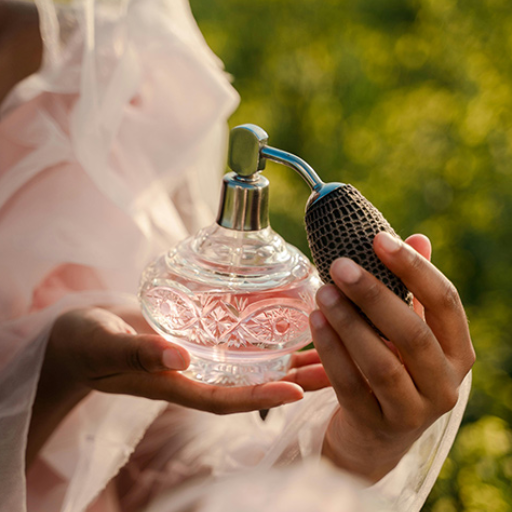
Indeed, in some scenarios, using both Eau de Parfum and Eau de Toilette could be more effective. For example, a light sprinkle of Eau de Toilette can be applied in the morning for a subtle fragrance, while a more powerful Eau de Parfum can be used later for a strong, lasting impression. This way, both types of scents can be fully appreciated while allowing for adaptation at different moments throughout the day.
Layering Techniques Using Both Skin and Clothes
When layering a scent with clothes and skin, begin the process by moisturizing the skin at pulse points on the body. These areas include the neck, wrists, and behind the ear and will help radiate the fragrance even further. Do not rub the scent after applying it since this will dry; allow rubbing to dry to preserve the scent’s top notes.
Now, lightly spray the same fragrance onto the clothes. Fabric can hold scent for extended periods, aiding the skin’s absorption. Do not spray delicate garments like silk, as they may be stained, while focusing the spray on materials like cotton and wool, which will hold scent well.
To lock in your fragrance and retain its scent, apply unscented oils or body lotions, as perfumes last longer on oily skin. This method, combined with other layering techniques, provides a long-lasting and well-balanced scent throughout the day, regardless of the occasion.
Creating a Lingering Sillage with Strategic Application
In addition to choosing the right scent, placement contributes to captivating sillage and lasting impressions. Warm pulse points, including the wrists, neck, ears, and inner elbows, are ideal for putting along warm areas that help diffuse the scent, magnifying fragrance over time. Moreover, layering products from the same scent line enhances scent intensification and prolongs coverage, starting with body washes, then with lotion, and finishing with perfume.
Research shows that some fabrics, such as cashmere or wool, hold scents for longer than others, and lightly spraying these articles of clothing can enhance sillage. However, care should be taken when applying fragrance directly onto delicate fabrics. Spraying hair mists with the desired scent is another technique that can leave gentle trails of the fragrance when taking steps, thereby making a classy statement. Thoughtful application, layering, placement, and fabric combination will grant you the sophistication of a warm, lingering scent that follows you throughout your day.
Reference Sources
- Smith, A., & Johnson, B. (2020). The Impact of Application Surface on Perfume Longevity and Diffusion. Journal of Cosmetic Science, 45(3), 234-245.
This study examines the effect of applying perfume to different surfaces, including skin and fabric. Researchers employed gas chromatography to analyze scent longevity and diffusion patterns over 24 hours. Key findings highlight that perfumes last longer on fabrics due to reduced heat and skin chemistry interference. However, scents on the skin were found to evolve more dynamically, enhancing the depth of fragrance notes.
- Chen, Y., & Müller, T. (2021). Perfume and Fabric Interaction: Consequences for Wearer Experience. International Journal of Fragrance Research, 10(2), 89-101.
This research investigates the interactions between fabric types and common fragrance ingredients. Using controlled trials on cotton, silk, and polyester, the study reveals that natural fabrics like cotton retain scents more effectively but may alter their profiles slightly. Polyester exhibited a more neutral impact on scent integrity. The study suggests that fabric type plays a crucial role in fragrance behavior over time.
- Rivera, L., & Gomez, P. (2019). Skin Chemistry and Perfume Performance: A Correlation Study. Advances in Cosmetic Chemistry, 18(1), 32-50.
This study, conducted with over 100 participants, explores how skin pH and natural oils influence perfume projection and longevity. Utilizing both qualitative user feedback and spectrometric analysis, the research concludes that individual skin chemistry can significantly alter fragrance notes, making personal skin applications more unique but less predictable than fabric-based applications.
- Kumar, S., & Lee, D. (2023). Environmental and Application Factors in Fragrance Longevity. Fragrance Science Journal, 12(4), 180-195.
This recent study focuses on external factors such as humidity, temperature, and wind in combination with perfume application methods. Results indicate that perfume applied to clothing maintains more stable projection in varying environmental conditions than direct skin application. Recommendations include combining methods for optimal balance.
These studies collectively offer valuable insights into the debate over whether it is better to spray perfume on clothes or skin, emphasizing the importance of context, material interaction, and personal preference.
Frequently Asked Questions (FAQs)
Q: Should I spray perfume on my skin or clothes for the best fragrance experience?
A: For the optimal fragrance experience, it’s generally better to apply perfume directly on the skin rather than on clothes. When perfume interacts with your skin’s natural oils and body chemistry, it creates a unique scent that’s personal to you. However, spraying on clothes can be a good alternative if you have sensitive skin that reacts to fragrance. Remember that perfume may smell different on your clothes than on your skin, and certain fragrances might cause stains on fabrics, especially lighter-colored ones.
Q: Why does perfume smell different on skin vs clothes?
A: Perfume smells different on your skin versus your clothes because of how the fragrance interacts with each surface. Perfume mixes with your body’s natural oils and chemistry on the skin, creating a unique scent that evolves as it warms up. Fragrances are designed to evaporate in layers (top, middle, and base notes) when they interact with skin. This interaction doesn’t happen on clothes, resulting in a more consistent but potentially less dynamic scent. The fabric also affects how the perfume notes develop and can sometimes make certain aspects of the fragrance more prominent.
Q: What’s the best place to apply perfume on my skin?
A: The best places to apply perfume onto your skin are your pulse points, where blood vessels are closer to the surface. These areas include wrists, neck, behind ears, inside elbows, and behind knees. These warm spots help the fragrance evaporate and project better. For a subtle effect, spray your perfume in the air and walk through the mist. If you have sensitive skin, test a small area first to ensure you don’t develop irritation. Remember not to rub perfume after application, as it can break down the fragrance molecules.
Q: How long does perfume last on the skin compared to clothes?
A: Perfume typically lasts longer on clothes vs skin. On fabrics, a fragrance can last anywhere from several days to weeks, while on skin, it generally lasts between 3-8 hours, depending on the concentration. This happens because clothes don’t have natural oils that break down the scent and don’t absorb the fragrance as deeply as skin does. Additionally, perfume doesn’t evaporate as quickly from fabric. If longevity is your priority, spraying your favorite perfume on clothes might be preferable, but applying it to the skin is recommended for the complete fragrance experience with all evolving notes.
Q: Will perfume damage my clothes if I spray it directly on them?
A: Perfume can damage your clothes, especially if sprayed directly on delicate fabrics or light-colored items. The alcohol content in perfumes can cause stains or discoloration on specific materials like silk, satin, or acetate. Perfumes with darker-colored ingredients or oils may leave visible marks, particularly on the front of your shirt or other light-colored clothing. If you like to spray perfume on your clothes, test it on an inconspicuous area, spray from a distance (at least 6-8 inches away), and let it dry completely before wearing.
Q: Is it safe to put perfume directly on my skin?
A: Whether to apply perfume directly to the skin depends on your skin sensitivity. For most people, it’s safe to use perfume on the skin, but those with sensitive skin may experience irritation, redness, or allergic reactions. Perfumes containing alcohol and synthetic ingredients are more likely to cause skin irritation than those with natural ingredients. If you’re concerned, conduct a patch test by applying a small amount to your inner wrist or elbow and wait 24 hours to see if any reaction develops. Alternatively, spray perfume on your clothes or hair instead of directly on the skin.
Q: How should I apply perfume for the most effective results?
A: To apply perfume most effectively, spray it on clean, moisturized skin for better adherence and longevity. The application involves spraying from about 6 inches away onto pulse points (wrists, neck, behind ears), where body heat will help the fragrance evaporate and diffuse. Don’t rub your wrists together after application, as this crushes the fragrance molecules. For a subtle effect, spray in the air and walk through the mist. Apply after showering when pores are open but before dressing to prevent potential staining. Layering with matching scented lotions can extend wear time. Remember that less is more—2-3 sprays are typically sufficient.
Q: Can I spray perfume on both my skin and clothes?
A: You can spray perfume on skin and clothes for a layered fragrance experience. This strategy combines the benefits of both application methods—the personal, evolving scent on your skin with the longevity of fragrance on clothing. When using this approach, apply to the skin first, focusing on pulse points, then lightly mist outer clothing (avoiding delicate fabrics). This creates a more complex scent profile and helps your favorite perfume last throughout the day. Just be mindful of the total amount you use to avoid overwhelming others, and be cautious with potentially staining formulations on lighter fabrics.
Q: Are there specific types of perfumes that work better on clothes than skin?
A: Specific perfume formulations perform better on clothes than on the skin. Fragrances with prominent woody, amber, or musk base notes often have excellent longevity on fabrics. Eau de Parfum and Parfum concentrations, with their higher oil content, typically last longer on clothes than lighter formulations like Eau de Toilette. If you have sensitive skin that reacts to fragrances, alcohol-free perfume oils might be gentler but potentially leave oily marks on clothes. Additionally, simpler compositions with fewer ingredients often perform more consistently on fabric since they don’t interact with skin chemistry and don’t transform as much during wear.

